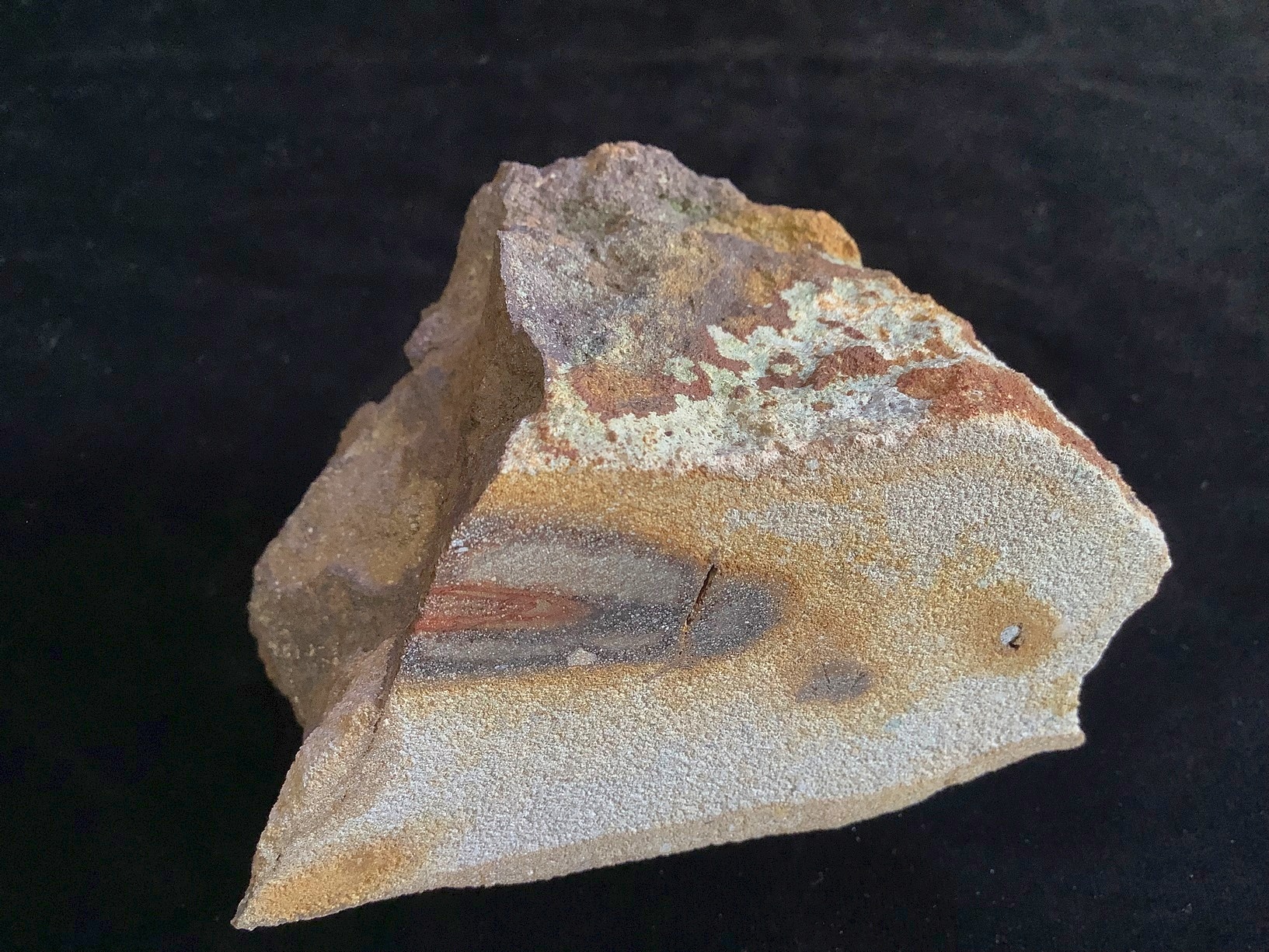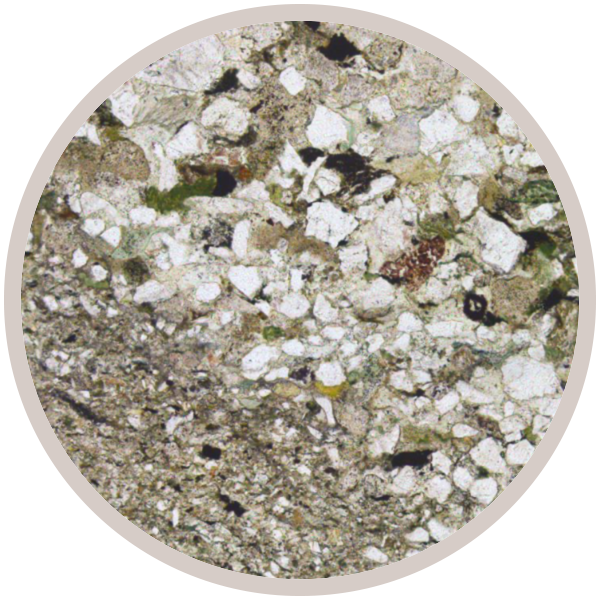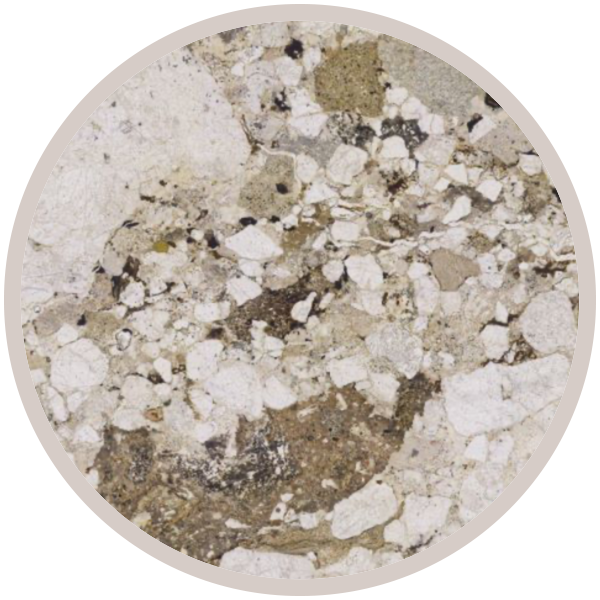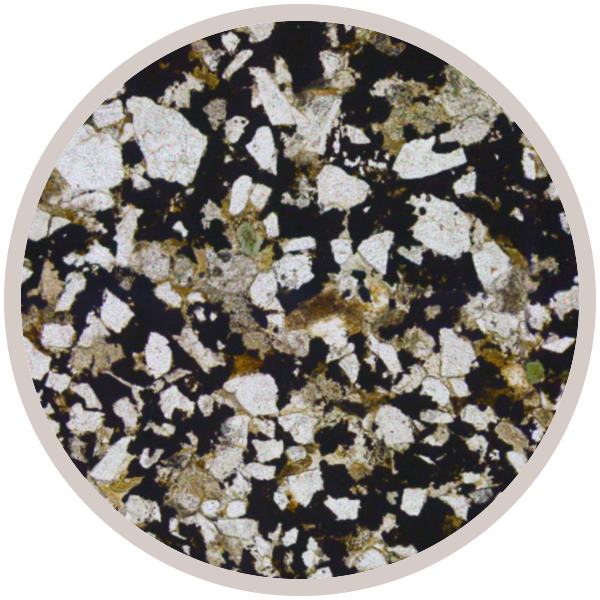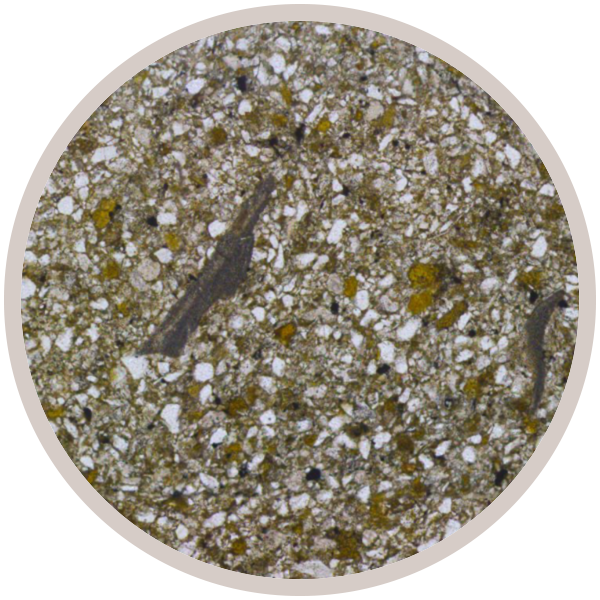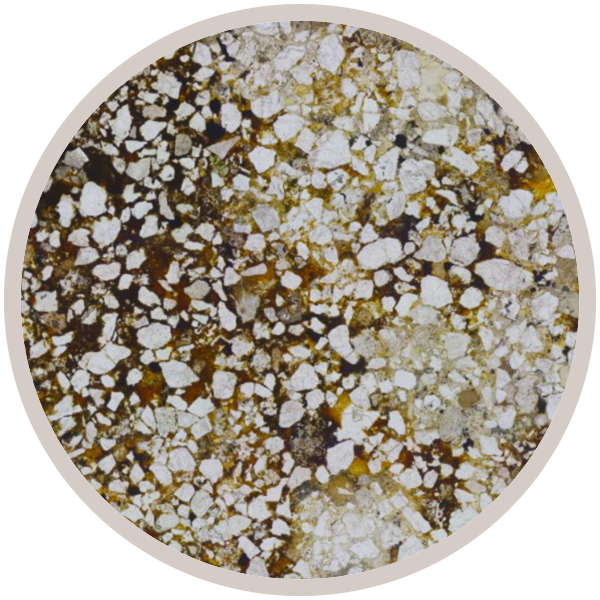
Fact sheet
A Carboniferous sandstone with patches of iron-rich cement, collected from Doulton's Claypit.
This sandstone was deposited in a low-lying, deltaic environment when the region lay near the equator. These deltas were thickly forested with trees whose fossil remains can be found in some of the strata. This sandstone likely represents a palaeosol that experienced fluctuating groundwater conditions, alternating between waterlogged and dry. This dynamic chemical environment led to the precipitation of insoluble iron minerals, notably siderite, in the pore spaces of the sandy soils. In this sample, the insoluble iron minerals are clearly concentrated in one or two patches, comprising a vaguely nodular texture.
In thin section, the first impression is of a pale sandstone dominated by colourless grains of quartz and feldspar. Grainsize appears to increase from left to right in the section, though this is partly due to an increase in the size and frequency of pore spaces in the right-hand half of the section. This may reflect original sedimentary layering, oriented obliquely across the thin section. Rounded to subangular grains are mainly clear quartz and dusty feldspar; there are a few polycrystalline lithic (rock) fragments and a few small greenish or brownish grains of altered mafic rock-types.
There is much variation in the spaces between the detrital grains. A layer in the right-hand half of the section has large, empty pore spaces. On the right-hand end and the left half of the section, there is more fuzzy, pale brown or yellow interstitial material, likely a mixture of fine grained clays and insoluble iron oxides, along with scattered patches of opaque material. In the lower left corner of the section, the proportion of opaque interstitial material increases towards a roughly oval area which is heavily cemented by material that is very dark brown to opaque.
This sample was collected as part of the 'Macro to Micro' project.
This Collection showcases the geodiversity of a classic geological site: the Saltwells National Nature Reserve in the West Midlands.
As well as displaying thin section and hand specimen views along with information setting them in the context of their landscapes, we also include perspectives and creative responses to the geological heritage of the sites from the local community.
| Explore the stories of the rock layers at Saltwells and Wren's Nest NNRs, designed by students at King Edward VI School, Stourbridge: |
This Collection was made possible by funding awarded to the 'Macro to Micro' project by the Natural Environment Research Council (NERC) under their 'Growing Roots' scheme.
